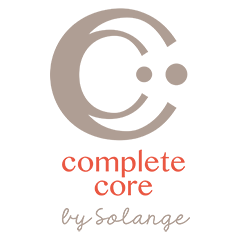It is challenging to treat a coccyx injury. Depending on the extent of the injury (bruise, sprain, strain, fracture) it can take 6 months to a year to heal with ongoing injury prevention and impact on the pelvic floor. It is an injury that it is very difficult to rest and takes mindfulness in body mechanics and posture throughout the healing process. The coccyx sits at the base of the spine and is extremely important because of its attachments to the pelvic floor. It is not meant to bear weight. However, when we sit backwards or slump, shift weight to one side (crossing legs), stand or bend in poor posture, this all affects the coccyx.
There are many factors that can trigger soreness to a healing coccyx including:
- Prolonged Sitting on a hard surface
- Exercises that put pressure on it - Spin class, Pilates roll ups/rolling like a ball/balancing with your legs lifted, Barre class where you are instructed to tuck.
- Tightness in the hip rotators and pelvic floor muscles.
- Kegels - with a coccyx injury you have to be very careful with pelvic floor muscle strengthening. Every time you do a kegel it pulls on the coccyx.
A Reverse Kegel is one of the key exercises for this injury. This is an elongation and relaxation of the pelvic floor muscles BUT without pushing out. You need to focus on relaxing the pelvic floor muscles first to restore the alignment before you strengthen.
To perform a Reverse Kegel first focus on the pelvic floor movement with the breath cycle. The pelvic floor moves in sync with the diaphragm. On inhalation, the rib cage expands, the diaphragm descends and the pelvic floor follows this movement. Focus on your breath traveling down to the pelvic floor and feel for a lengthening in the pelvic floor. On exhalation, the diaphragm ascends and pelvic floor lifts back to its starting position. The challenge with the reverse kegel exercise is to keep the pelvic floor muscles relaxed on the lifting phase with the breath cycle.
A reverse kegel is not a strengthening exercise where you would squeeze with the exhalation. You are focusing instead on relaxing the pelvic floor with its normal up/down excursion during the breath cycle. The best way to do this exercise is to feel for movement of the pelvic floor externally on the perineum or with one finger in the vagina. With the exhale you should feel the muscles stay relaxed around your finger. If you are externally on the perineum you may feel a subtle movement downward on your fingers.
As with a regular strengthening program if you don't stretch (or relax in this case) muscles can become tight. In particular with the coccyx, it gets pulled forward in protective spasm. The pelvic floor muscles often continue to hold tension once the injury has healed unless they are re-educated to lengthen.
Strengthening after a coccyx injury requires a delicate balance. Exercises which flex the spine, tuck the pelvis under, and little pulsing motions should be limited. Also watching the intensity and repetitions during exercise to allow for good form so the coccyx doesn't get compromised with fatigue. For example bridges, which are one of my favorite exercises and important to strengthen the pelvic floor, pull on the coccyx. You must be aware of pain or soreness at the coccyx during this exercise. Mindful exercise followed by stretching with the Reverse Kegel is necessary to avoid strain. Exercises that cause pain should be modified until the injury is fully healed.
Beyond exercise, this injury requires looking at your body mechanics and movement in the day to day. How do you sit, stand, bend, breathe? Are you always shifting your weight to one side? Take a look at all of your movement patterns. It may not be that one hour of exercise where you are focused on protecting your coccyx, but activities in the day to day that are aggravating it. Successful treatment of the coccyx requires looking at the big picture.
Do you have questions about an exercise? Are you struggling with a coccyx injury. Leave a comment below or ask Solange.

